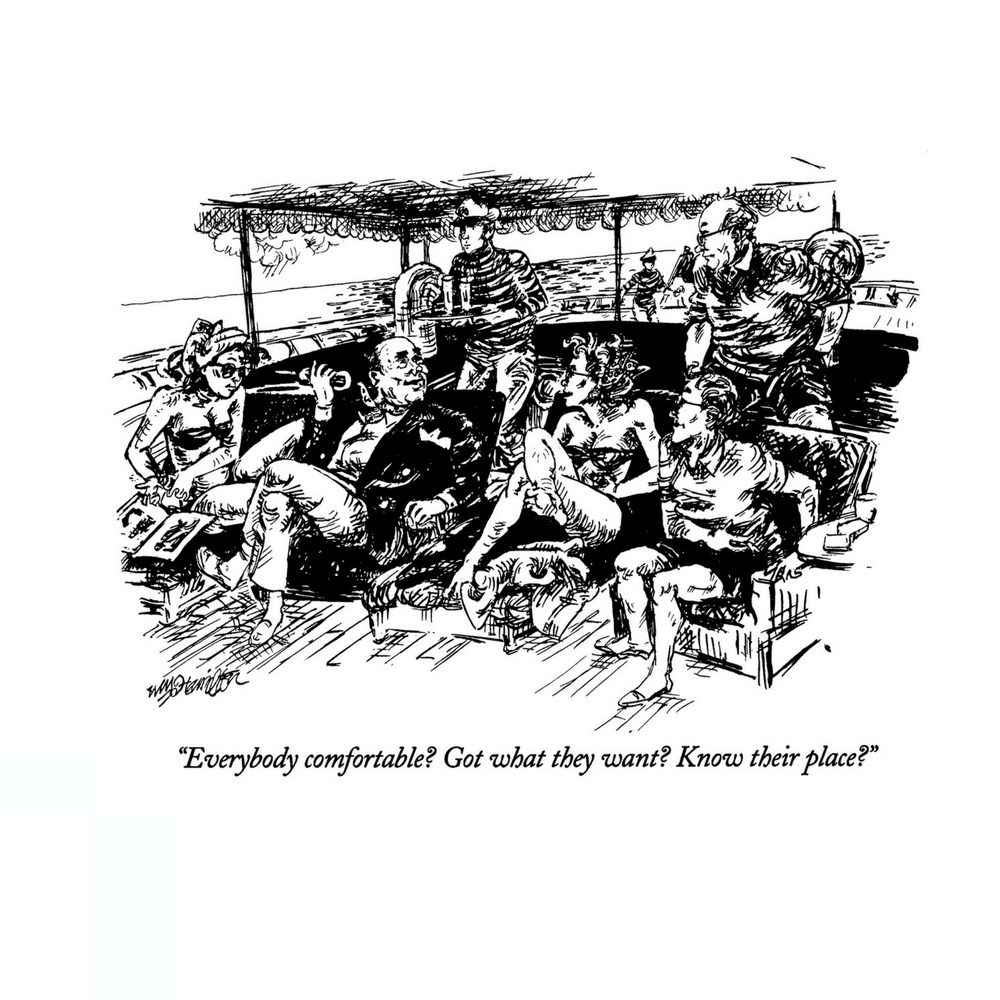Why Agency Makeovers are Difficult

Organizational stability is what we seek. We struggle to make order out of daily chaos. We yearn for the illusive: understanding and respect from clients, the successful management of deadlines, the creation of effective work, the achievement of personal satisfaction, the comfort that comes from knowing that we and our organizations are valuable partners -- that we fit in and, for better or worse, that we successfully occupy a little corner of the world. Isn’t that what our daily efforts are all about?
We accept the imperfect hierarchies in which we work. There are those above us, some of whom are inspiring, and others below us, some of whom get the job done. We hope to move up, through recognition and luck, and if we’re human, we hope our enemies and the dopes that drag us down will fail.
Stability is what we seek, and change, when it is thrust upon us, is the enemy of stability, much to be feared and resisted. Change looks a lot like chaos. With change, our corner of the world may be wiped out. Our skills and experience? Devalued or forgotten. Our network of relationships? Altered in uncertain ways. Our sense of confidence about the future? Shaken. Our economic prospects? At risk. Ever since “shareholder value” became the dominant corporate mantra and C-Suite salaries went through the roof, change has been ever-present. In manufacturing, domestic supplier relationships were ditched, as lower-cost global suppliers were identified and secured. This gutted domestic manufacturing employment in permanent ways and destabilized the lives of skilled and unskilled workers.
Downsizings are routine, and corporate loyalty seen as a quaint concept of the past. Companies in lower-growth industries boost earnings and margins to maintain the inflated expectations of Wall Street and the extraordinary C-Suite salaries that they support. Marque advertising agencies have been particularly hard-hit by downsizings, caught as they are between fee-cutting clients and performance-demanding holding companies. Fewer agency people are now left to deal with growing Scopes of Work. This has been a feature of agency life for more than two decades. It is neither good not bad. It just “is,” and the imbalance among fees, workloads and resources has reached crisis proportions.
There are changes that cannot be avoided. Globalization of brands, the rise of procurement, the innovation of digital and social media, the demographic take-over by Millennials, the rise of e-commerce (Amazon in particular) and the success of Google and Facebook scream at the advertising industry: Change or die! What you’re currently doing is not working!
Organizations cannot volunteer to change. Organizations resist change, for all the reasons described above. Change is the enemy of stability. However, change and instability can be tolerated for the credible promise of a stable future. This is where strong leaders are required -- the agency CEO and the top management team. The leaders need to articulate a vision of the future and provide strong and unwavering personal leadership that convince the organization that future stability will be achieved despite the current chaos. What does not work are forceful calls to “embrace core values” or “become even better at doing what made us great in the past.” Agency leaders whose vision of the future is “better creativity” and “more successful new business wins” are wasting their time and squandering their credibility.
The temptation to go down this road is obvious. Agency CEOs are insiders, not outsiders, and they have accumulated their vision of success from the past. Success for the future is outside their experience. There is a need, then, for creativity in designing the future. This kind of creativity requires analysis, logic, observation, vision and inspiration. The rearview mirror is not a useful tool.
For the future, agencies need to refocus on their clients. Clients have many unmet needs. Brands are not growing. Millennials remain a large and uncomfortable mystery. Amazon, Google and Facebook have supplanted traditional channels of communication and sales. Content, to date, is not delivering marketplace success. CMOs are struggling.
- Agencies that commit to solving clients’ brand performance problems can create a sustainable future for themselves. This requires a new statement of mission.
- Agencies that insist on being paid for all the work they do, and can assure that the work will deliver positive results, will have improved economics and a sustainable future. This requires that SOWs be documented, tracked, measured and negotiated -- requiring new operational practices and SOW systems like ScopeMetrics®.
- Agencies that require Account Heads to be accountable for fees, workloads and resources will have stronger management teams. Today’s overservicing practices need to be abandoned. This requires new policies, practices and training.
These three dimensions can be used by agency leaders to define an agency future. At present, though, this is mere theory.
Is stronger leadership required today? Without a doubt. In practice, the agency future remains undefined.
Cartoon credit: William Hamilton, The New Yorker, The Cartoon Bank. With permission.
Click the social buttons above or below to share this content with your friends and colleagues.
The opinions and points of view expressed in this content are exclusively the views of the author and/or subject(s) and do not necessarily represent the views of MediaVillage.com/MyersBizNet, Inc. management or associated writers.


